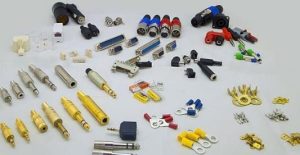Deciphering the Purpose of a Waveguide Directional Coupler
Introduction

A waveguide directional coupler stands as an indispensable component in the realm of microwave engineering, serving a pivotal role in signal management and distribution. Let's delve into the intricacies of its purpose and functionalities, unveiling its significance across various applications.
Signal Diversion and Monitoring
At its core, the primary purpose of a waveguide directional coupler is to divert a fraction of the input signal power to a secondary output port while allowing the majority of the signal to pass through unhindered. This enables real-time monitoring and analysis of the main signal path without disrupting its flow.
Isolation Between Ports
One of the key functionalities of a waveguide directional coupler is to provide isolation between the input and output ports. By minimizing signal leakage and crosstalk between ports, these couplers ensure signal integrity and prevent interference, thereby enhancing the overall performance of RF and microwave systems.
Precise Power Measurement
Another crucial purpose of waveguide directional couplers is to facilitate precise power measurement and monitoring. By tapping off a known fraction of the input signal power, these couplers enable accurate measurement of signal strength, enabling engineers to assess system performance and troubleshoot potential issues effectively.
Directional Signal Coupling
Additionally, waveguide directional couplers serve as essential components for directional signal coupling in various RF and microwave applications. Whether in radar systems, telecommunications networks, or test and measurement setups, these couplers enable controlled coupling of signals between different components while maintaining signal integrity and isolation.
Applications Across Industries
1. Radar Systems:
- In radar systems, waveguide directional couplers facilitate beamforming, sidelobe suppression, and signal monitoring within antenna arrays, enabling precise target detection and tracking.
2. Telecommunications:
- Telecommunication networks leverage directional couplers for signal distribution, power monitoring, and network optimization, ensuring reliable and efficient communication.
3. Test and Measurement:
- In test and measurement applications, waveguide directional couplers play a crucial role in calibrating RF instruments, characterizing RF components, and validating system performance.
Conclusion
In conclusion, a waveguide directional coupler serves as a versatile and indispensable tool in the arsenal of microwave engineers, enabling precise signal monitoring, power measurement, and directional signal coupling across a myriad of applications. Explore a diverse range of high-quality waveguide directional couplers at waveguide directional coupler and unlock unparalleled performance and reliability for your RF and microwave systems.
